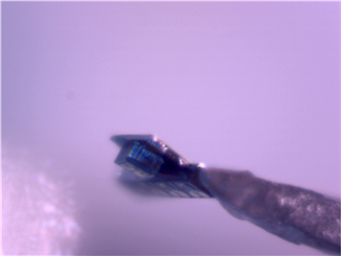Joint Colloquium Distinguished Lecture Series
Micro-Fluidics to Surgery: An Engineer in Medicine
 |
Wednesday, October 31, 2012 Axel Scherer |
Abstract:
Over the past decades, lithography and high-resolution pattern transfer have enabled the fabrication of nanostructures with lateral sizes of 10nm and below. These capabilities have fueled the miniaturization of integrated electronics, and more recently this miniaturization technology has been extended to biomedical applications. The opportunity of lithographically defined devices lies primarily in reducing the manufacturing cost and improving the accuracy of aligning devices with different functions to one another. In this presentation, integrated and miniaturized optoelectronic, opto-fluidic and electrochemical microsystems are described, in which electronics can be combined with optics, fluidics or magnetics on integrated platforms. We show how integrated microsystems can form the basis of new functionality  and reduce the cost or complexity of biomedical and chemical sensing instruments. For example, we have developed point of care disease detection systems as well as microfluidic chips in which electronic signals can control picoliter volumes of material. Our microfluidic systems can be integrated with ion-sensitive transistors, capacitors, inductors, magnets and even fluorescent detectors to manipulate cells or molecules or to measure local chemistry. Integrated systems can now be made inexpensively with the promise of providing molecular pathology with robust point-of-care instruments. Further miniaturization of such instruments leads to the interesting opportunity of conducting measurements inside the body, using compact implantable probes with sub-millimeter dimensions. These sensors are powered and communicate optically, and can measure chemistry changes or neuronal activity. When used as health monitors, such miniaturized sensors can identify the onset or progression of diseases, and even hold the promise of understanding brain functions or enable control over prosthetic devices.
and reduce the cost or complexity of biomedical and chemical sensing instruments. For example, we have developed point of care disease detection systems as well as microfluidic chips in which electronic signals can control picoliter volumes of material. Our microfluidic systems can be integrated with ion-sensitive transistors, capacitors, inductors, magnets and even fluorescent detectors to manipulate cells or molecules or to measure local chemistry. Integrated systems can now be made inexpensively with the promise of providing molecular pathology with robust point-of-care instruments. Further miniaturization of such instruments leads to the interesting opportunity of conducting measurements inside the body, using compact implantable probes with sub-millimeter dimensions. These sensors are powered and communicate optically, and can measure chemistry changes or neuronal activity. When used as health monitors, such miniaturized sensors can identify the onset or progression of diseases, and even hold the promise of understanding brain functions or enable control over prosthetic devices.
| Return to EECS Joint Colloquium |

